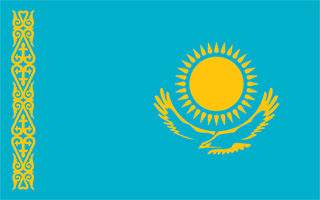Facts and Data
Webpages:
Official Unesco Page
Protectedplanet.net
Basis Data:
Unesco World heritage since: 2008
Size of heritage: 450,344 ha
- Buffer zone: 211,148 ha
Coordinates:
Longitude: 69,189°
Latitude: 50,433°
Summary
Saryarka - Steppe and Lakes of Northern Kazakhstan comprises two protected areas: Naurzum State Nature Reserve and Korgalzhyn State Nature Reserve totalling 450,344 ha. It features wetlands of outstanding importance for migratory water birds, including globally threatened species, among them the extremely rare Siberian white crane, the Dalmatian pelican, Pallas’s fish eagle, to name but a few. These wetlands are key stopover points and crossroads on the Central Asian flyway of birds from Africa, Europe and South Asia to their breeding places in Western and Eastern Siberia. The 200,000 ha Central Asian steppe areas included in the property provide a valuable refuge for over half the species of the region’s steppe flora, a number of threatened bird species and the critically endangered Saiga antelope, formerly an abundant species much reduced by poaching. The property includes two groups of fresh and salt water lakes situated on a watershed between rivers flowing north to the Arctic and south into the Aral-Irtysh basin.
Location on Map
Show bigger map on Openstreetmap
Introduction
The Saryarka – Steppe and Lakes of Northern Kazakhstan is a UNESCO World Heritage site located in the northern region of Kazakhstan. This vast area encompasses a unique combination of steppe grasslands and freshwater lakes, providing a diverse and rich ecosystem. The site covers an area of approximately 450,344 hectares and is of great ecological importance.
History
The history of the Saryarka region dates back thousands of years, with evidence of human habitation and nomadic cultures. The steppe has been a vital resource for the local Kazakh people, who have relied on its grasslands for grazing livestock and as a hunting ground. The lakes in the region have also played a significant role in sustaining local communities, providing water for both humans and animals.
In 2008, the Saryarka – Steppe and Lakes of Northern Kazakhstan was inscribed as a UNESCO World Heritage site. This recognition was due to its exceptional biodiversity and the crucial role it plays in the conservation of migratory bird species. The site serves as a vital stopover point for millions of birds during their annual migration, making it an essential part of their life cycle.
Current State
The Saryarka – Steppe and Lakes of Northern Kazakhstan is currently well-preserved and managed by the Kazakh authorities. Efforts have been made to protect the site's unique ecosystems and maintain its ecological balance. The Kazakh government has implemented various conservation measures to ensure the long-term sustainability of the site.
The steppe grasslands of Saryarka are home to a wide range of plant species, including several rare and endemic ones. The grasslands support a diverse array of wildlife, including mammals such as the saiga antelope, which is a critically endangered species. Other notable species found in the area include the steppe polecat, marbled polecat, and numerous rodent species.
The lakes within the Saryarka region are of great importance for both resident and migratory bird species. Over 300 bird species have been recorded in the area, including globally threatened species such as the Dalmatian pelican, white-headed duck, and sociable lapwing. The lakes provide crucial breeding grounds and feeding areas for these birds, making it a vital habitat for their survival.
Efforts have been made to raise awareness about the importance of the Saryarka – Steppe and Lakes of Northern Kazakhstan among local communities and visitors. Educational programs and initiatives have been implemented to promote sustainable tourism and responsible behavior within the site. This ensures that the natural and cultural values of the area are preserved for future generations.
Conclusion
The Saryarka – Steppe and Lakes of Northern Kazakhstan is a remarkable UNESCO World Heritage site that showcases the unique combination of steppe grasslands and freshwater lakes. Its rich biodiversity and crucial role in the conservation of migratory bird species make it a site of global significance. With ongoing conservation efforts and responsible tourism practices, this heritage site will continue to thrive and contribute to the preservation of Kazakhstan's natural heritage.
